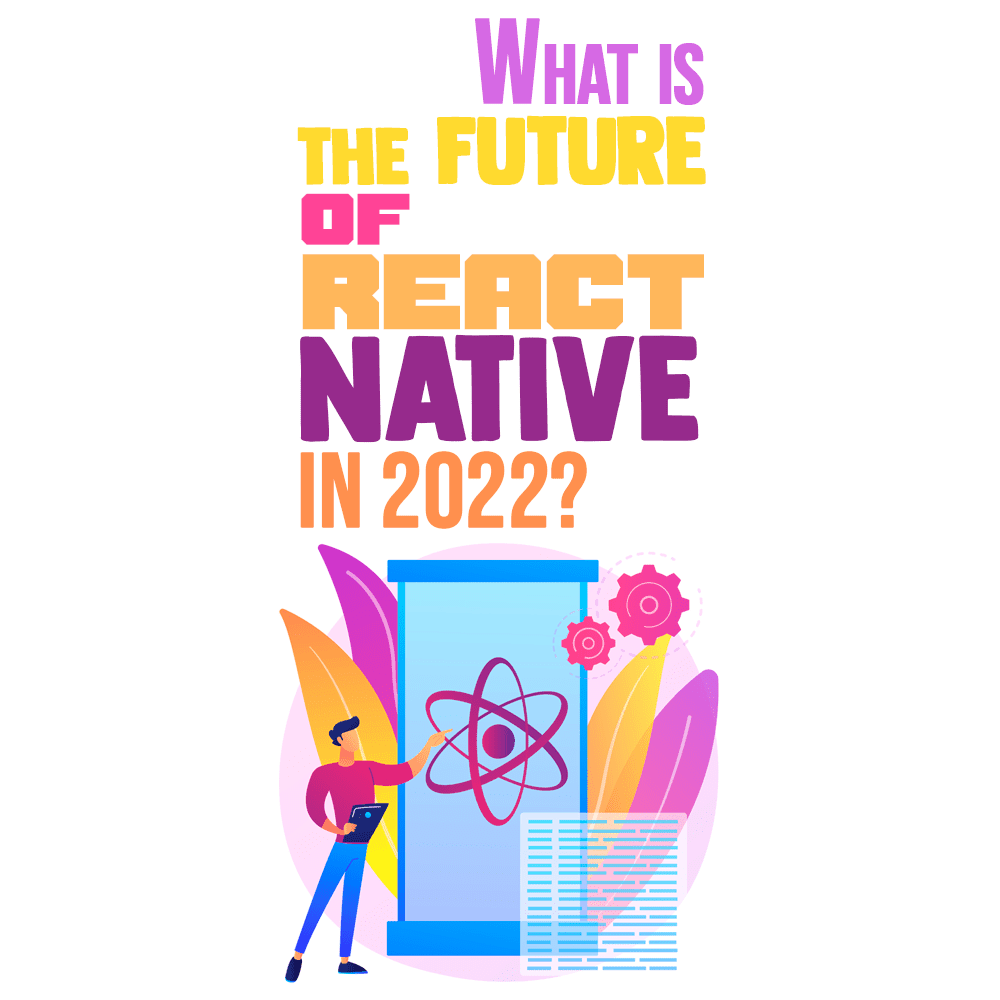 Why are developers still using React Native? In the past four years, React Native has gained a great deal of attention and become a popular platform for developing mobile apps.
Why are developers still using React Native? In the past four years, React Native has gained a great deal of attention and become a popular platform for developing mobile apps.
Nowadays, React Native is the most popular hybrid mobile technology in the world.
The react-native framework remains a powerful tool for cross-platform mobile development, despite its weaknesses.
Facebook, Instagram, Airbnb, and Salesforce have heavily incorporated the React Native framework in recent years to gain a competitive edge.
JavaScript is used for building native cross-platform mobile apps with React Native.
The React Native framework is similar to React because it enables the development of declarative user interfaces in JavaScript, for which it internally creates a virtual DOM with a hierarchy of UI elements.
How did React Native become so popular?
Some of the biggest and most-recognized brands in business use React Native, including Facebook, Tesla, Instagram, Skype, UberEats, AirBnB, and Walmart. And the popularity of the platform continues to grow.
Because of its high level of portability and reliability, React Native is so successful.
Developers should not consider compatibility with other platforms when writing code for a specific platform.
The best part about React Native is that it loads instantly. This means that you will not have to wait for build times.
You can write your own Native module that you can link to your React Native codebase, even if React Native Library does not support a particular feature in the future.
The top benefits of React Native
There are eight main benefits of React Native, all of which have made this platform a favorite of developers.
Time to Market
The time to market for the current app refers to the period between conception and sale.
Time-to-market is critical to the success of the app. Your app should be available on both iOS and Android so that you can gain market share as soon as possible.
React Native reduces the delay of the application.
Live updates in real-time
Since JavaScript is popular, app developers can push updates directly to users’ phones without requiring them to go through an update process.
Not only is the entire process faster, simpler, and easier for users, but it is also more efficient.
Faster React Native Apps
Clean, simple, and easy-to-read code is generated by React Native.
This allows users to interact with the JavaScript and native environments in a highly responsive way.
The hybrid app also loads faster.
Features of compatibility
Previously, we discussed how React Native is compatible with both iOS and Android. React Native’s future looks even brighter.
Platforms supported by React Native include Windows, macOS, Linux, TVOS, and watchOS.
The community is large
On Stack Overflow, there are over 2 lakh questions about React Native, which is a huge benefit to using the framework.
Every month, millions of developers have been able to try out new versions of React Native.
Development costs
Money plays an important role when it comes to app development for startups.
If your target audience uses both Android and iOS platforms, cross-platform mobile apps are the way to go and React Native is the most cost-effective option.
As much as 40% of the development cost can be saved with React Native’s code reusability service.
Simple and easy to maintain
The APIs of native frameworks are growing as well. In the past, we had to update the Android apps to use the latest tools and wasted time deploying iOS apps before React Native came along.
The process can be lengthy if your application was built on a native platform.
Maintaining an app using React Native is straightforward, simple, and cost-effective.
Increased performance
Through native control and modules, React Native offers improved performance.
Because the open-source framework runs native APIs and the User Interface on separate threads, its performance will be significantly better than its competitors, such as WebView.
A React Native application usually loads relatively faster and feels smooth while using it.
App development with React Native in the future
The advantages of React Native make it stand out from its competition and make the future seem more promising.
Fabric will have a new threading model, which lets developers call JavaScript from any thread instead of dealing with each UI update in three separate threads. The main thread will be less stressed while responsiveness is improved.
React Native will be able to render in asynchronous mode with this change. React Native will be able to render in asynchronous mode with this change.
Bridge rewritten- Developers are working on optimizing the direct calling between JavaScript and native code through a rewritten bridge. Various debugging tools will also become easier to create as a result.
React Native’s advantages
It has also gained a reputation as a mobile development framework that is fairly mature. What are its main advantages?
- It has a stable API and is backed by Facebook.
- React and JavaScript developers can easily learn it. There are many libraries, tools, UI frameworks, and tutorials for React. There is a strong community as well.
- With one codebase, it enables fast development for iOS, Android, and Web.
- Adding new code to a running app with React Native decreases the risk of losing some functionality when the app is reloaded.
If you’re not using React Native, you should read this
I hope you got your answer if you were one of those who were wondering what the future held for React Native.
The growing popularity of React Native can be attributed to a large number of developers and reusability of code.
